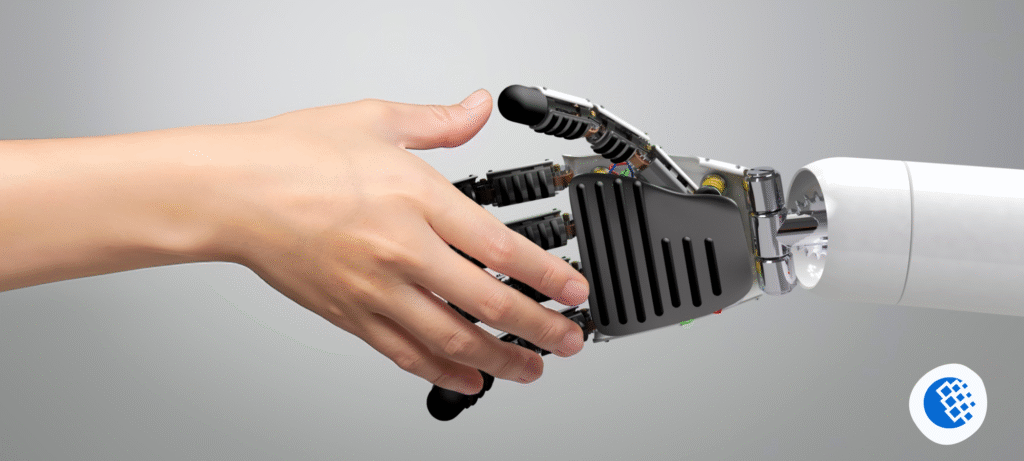It’s no secret – AI ad creators have shaken up how businesses launch campaigns these days. When it comes to speed, using an AI advertisement generator can help you connect with your audience faster than you might expect. Instead of getting bogged down with endless back-and-forth edits, let’s see how AI ads stack up against the manual method.
As you’ll discover, the best AI ad generator tools can boost your productivity across platforms.
Even if you’re not a tech enthusiast, exploring a free AI ad generator for your next campaign lets you see measurable speed differences. Why not compare your results with manual drafting just this once?
The Challenge: Speed in Ad Creation
Speed is often the make-or-break factor in digital advertising. When timing matters—like jumping on viral trends or launching time-sensitive offers—you need your creatives ready in minutes, not days.
Ideas & Advice:
Use AI ad maker tools to quickly test multiple ad angles for flash sales or trending events
Tools like Quickads, Creatify, and AdCreative.ai can generate multiple creative angles in under 10 minutes. Use these to A/B test hooks like urgency vs. value in your flash sale copy.
Implement a workflow where AI ads are your “Plan A” for time-sensitive opportunities.
Set up templates and pre-approved brand prompts so your team can generate and push live an AI-based ad within 15–30 minutes when trends break.
Keep a list of campaign moments where every minute counts. Product drops, breaking news, influencer mentions—build a checklist of scenarios where speed trumps perfection. Test AI-only sprints for those.
What is an AI Advertisement Generator?
AI advertisement generators aren’t just for writing—they’re built to create entire campaigns at scale, in record time. They generate visuals, tailor messaging by persona, and prep multi-platform assets in minutes.
Actionable Tips:
- Diversify your toolkit Use the AI ad generator to draft 10–15 versions of your copy. Select the top 3 and apply manual finesse. This improves both speed and quality without starting from scratch.
- Take advantage of free AI ad generator versions to experiment before you invest Most tools offer 5–10 free credits monthly. Use them to validate your use case (video scripts, static ads, headlines) before committing.
- Explore multi-platform support: Look for tools that support export formats for Meta, Google, YouTube, and LinkedIn. This eliminates platform-specific reformatting and speeds up publishing.
- Integrate with A/B testing workflows: Use platforms like GetHookd or AdCreative.ai that automatically test and optimize creatives post-launch using performance data.
Manual Drafting: The Traditional Approach
Manual ad creation still reigns supreme when nuance, storytelling, and emotional clarity are non-negotiable. It’s slower, but offers deep control for campaigns where every word matters.
Here’s what you can do:
- Start with AI, polish manually: Use AI for V1 drafts to break creative block and reduce ideation time. Then add unique brand tone, CTA language, or storytelling through human refinement.
- Reserve manual drafting for flagship campaigns: Think product launches, rebranding, or investor-facing creatives—where emotional resonance and clarity matter most.
- Feed back learnings to your AI prompts: After a campaign, review which manual tweaks improved AI copy and add them into your prompt template library for future use.
Head-to-Head: Speed Test Analysis
If you’re comparing workflows side-by-side, AI clearly wins on time and scale. Here’s how the two approaches measure up:
| Aspect | AI Ad Generator | Manual Drafting |
| Initial Draft | Seconds to minutes | Hours to days |
| Edits/Revisions | Automated/Rapid | Manual, time-consuming |
| Platform Adaptation | Instantly multi-format | Manual reformatting |
| Scalability | High (bulk creation) | Limited by human resources |
| Turnaround for Testing | Immediate | Slow |
Actionable Advice:
Batch-process your next campaign: Use AI tools to instantly generate 20–50 ad creatives. Then shortlist top performers for manual polish.
Use AI to localize ads: AI can translate and localize tone instantly for global markets. This would take days manually and often involves external translation teams.
Beyond Speed: A Holistic Comparison
AI wins on speed, but what about ROI, brand consistency, and campaign effectiveness? Let’s break it down further.
Cost
Use AI for volume campaigns: Retargeting ads, carousel creatives, and variant testing are ideal candidates. Save time and design budget.
Estimate blended ROI. For example, if you save 20 hours/month by using AI for initial drafts, you can reinvest that time in high-impact manual storytelling.
Quality and Brand Consistency
Train your AI with brand examples. Use prompt frameworks that include tone, audience, campaign goal, and product benefit structure. Save winning prompts for internal team reuse.
Performance Metrics
Set a benchmark. Start by running both AI and manual ads side-by-side. If the CTR or ROAS gap is less than 10%, AI may be good enough for 80% of your creative output.
Real-World Use-Cases
Wondering where AI fits into the real world? Many D2C brands, agencies, and SaaS marketers use AI for campaigns with high volume and fast turnaround.
Actionable Advice:
Create a rapid-response library: Pre-load templates in your AI tool for product drops, sales alerts, or PR crises.
Use AI for seasonal campaigns: Generate 30 variations of “Back to School” or “Festive Sale” creatives in a day, then iterate weekly based on live performance.
Customer-Centric Angle: How Speed Benefits YOU
Speed doesn’t just help brands move faster—it helps you stay relevant, experiment more, and reach new customers in record time.
Tips to Try:
Launch global variants instantly: Test Spanish, Hindi, and French versions of your top ad using multilingual support in your AI tool.
Set up a 48-hour creative feedback loop: Review AI ad performance every 48 hours, tweak prompts or audience, and regenerate new creatives mid-campaign.
A Segment Worth Noticing (Unexplored Speed Factors)
Speed isn’t always about seconds—it’s about friction. And yes, AI comes with its own onboarding, QA, and integration curve.
Actionable Ideas:
Run team onboarding using prompt templates: Save 2–3 high-performing prompt formats for junior marketers to reuse.
Create a QA checklist: Define what makes an AI ad “publish-ready” (no spelling errors, tone check, platform specs met) and run a final 10-minute human review before publishing.
Test publishing compatibility weekly: Tools change fast—ensure your AI ad tool exports correctly to Meta Ads Manager or Google Ads without distortions or CTA issues.
Community Insights: Real Questions, Real Use Cases
Here are some of the most common and useful questions from Reddit and Quora users about AI ad generators vs manual drafting—answered in plain language based on real-world results and expert experience.
1. Can AI truly replace manual ad drafting for originality and brand voice?
Not entirely. AI is particularly effective for generating ideas, drafting initial content, and making quick edits. But if you’re aiming for emotional storytelling or a nuanced brand voice, human copywriters still have the upper hand. Use AI to go from zero to one, then polish it manually.
2. Is it worth using both AI and manual methods together?
Absolutely. The hybrid approach is what most marketers prefer today. Let AI handle the grunt work (like writing 10 headline variants), and use manual finesse for tone, emotion, and final edits. Think of AI as your creative assistant, not a full replacement.
3. Are AI-generated headlines and ad copy effective?
They work surprisingly well for testing. Tools like AdCreative.ai and Creatify let you generate and test dozens of hooks quickly. But always review for tone and relevance—some AI-generated lines can still sound robotic or off-brand.
4. Will using AI really save money in the long run?
Yes—especially if you’re producing high volumes of ads. AI reduces the need for large creative teams and speeds up workflows. It’s a smart move for startups, agencies, and lean marketing teams looking to do more with less.
5. What are other marketers saying about it?
One Redditor shared, “We use AI for 70% of our creatives. Only the final 30% gets human-polished.” This sums up what many teams are doing—letting AI handle scale and speed, while reserving human input for key messaging moments.
Still skeptical? Reddit and Quora users have tested AI ad generators across industries—and their feedback is brutally honest.
Recommendations: Which Method Should Customers Choose?
Here’s the bottom line: you don’t need to pick sides. The most effective brands utilize AI and humans in tandem, tailoring their approach based on context, budget, and campaign type.
Action Point:
- Run an internal audit: Identify which 60–80% of your ad load is repeatable. Automate those with AI. Save manual effort for hero creatives.
- Don’t replace, augment: Think of AI as a junior copywriter that drafts fast. Your team still adds polish, brand tone, and context.
Bottomline
It’s clear: for speed, nothing outpaces today’s AI ad generator tools, but blending them with manual human touch will give you the best of both worlds. Whether you start with a free AI ad generator or invest in a top-tier AI ad creator, the future points to hybrid strategies that maximize both efficiency and creativity. Now, why not try it for yourself and see just how much faster your next campaign can launch?





